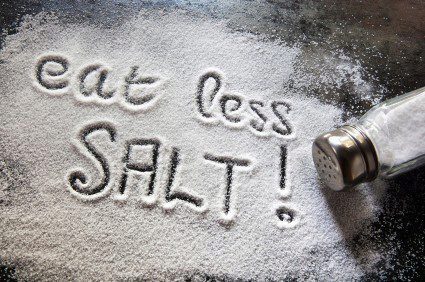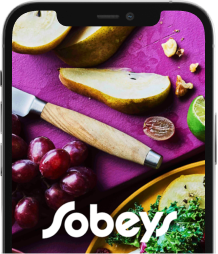With most of us consuming about double the amount of salt we should in a day, there are plenty of good reasons – whether you or someone you know is currently managing heart disease or not – to believe that overall, our risks for sodium-intake-related health problems are climbing. So, here are some tips for shaking off your bad sodium habits for good.
Know your limit. The maximum daily recommendation for adults is 2,300 mg of sodium – to help you visualize, this amounts to 1 tsp (5 mL) of table salt. Dietitians suggest falling between 1,500 and 2,300 mg a day. That’s probably a lot less than you think, so it’s worth calculating your daily intake.
Add a squeeze of citrus. Instead of sprinkling on salt, use lemon, lime, grapefruit and orange juice or a grating of fresh zest to give meat, fish and vegetables a flavour lift. Or use your favourite flavoured vinegar — instead of extra salt — to add zip to soups, stews and sauces.
Read labels on pantry staples. To save on sodium, make the better food switch to low salt versions of your favourite foods. Big culprits are items such as canned tomatoes, soups, broths and vegetable juices – now available in low-salt versions that are often just as enjoyable.
Go for fresh garlic and onion. This flavourful pair adds interest to almost any dish. Use them fresh rather than powdered, which may contain extra salt.
Cut back gradually. Salt is an acquired taste, so reducing it slowly and subtly will give your taste buds a chance to adjust. We promise, once you start cutting down, you won’t reach for the shaker as often.
Cook more often. Only 11% of the salt we eat daily comes from meals prepared in our own kitchens, while restaurant meals and processed foods account for close to 80% (the rest comes from natural sources). So, the more food you make yourself, the less salt you’ll consume.
Sprinkle on herbs and spices. Herbs (fresh or dried) and spices add dimension to any dish without the need for salt. We are huge believers that with more flavourful ingredients, few of us will miss the salt.
Seek out its hiding places. Salt is often used in canned goods as a preservative, so be sure to rinse tinned beans and opt for frozen and fresh vegetables when you can. Sodium can lurk in less obvious places too, including desserts and – surprise – some of your favourite flavoured takeout coffee drinks.
Learn the vocabulary. Brined, pickled, smoked, cured and corned all signal higher sodium. And while it may go by another name — kosher, coarse, sea — it should tell you that more sodium has been added.
Shopping for Low Sodium & Sodium-Free Foods
For all of you who are looking to learn about and select products that contain less salt, we created a Low Sodium & Sodium-Free Natural Source Product List to help you find these alternatives more easily. You’ll find all these products in our Natural Source department.
Low Sodium or Sodium-Free labels are based on guidelines determined by Health Canada and information provided by product manufacturers on the Nutrition Facts Table of the product. Health Canada deems a product to be Low Sodium if there are 140 mg of sodium or less per serving. A product is deemed Sodium Free by Health Canada if there are less than 5 mg of sodium per serving.






